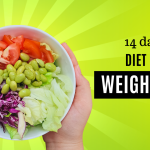When did organic food become popular? In recent years, organic food has gained immense popularity due to its perceived health and environmental benefits.
Growing concerns about pesticides and sustainability are propelling consumers towards organic choices at an increasing rate However, debates persist over the true advantages of organic farming. Despite this, the industry continues to thrive, with more people embracing organic lifestyles. As interest grows, so does the need for clearer information about what organic really means and its impact. Through ongoing discussions and research, we can better understand the role of organic food in promoting healthier lives and a more sustainable future.
The Organic Wave: Global Trends and Consumer Attitudes Shaping the Future of Food
This heading encapsulates the overarching trend of what are organic food gaining traction globally. It reflects the increasing awareness and adoption of organic products among consumers worldwide.This trend is shaped by several factors, including increasing apprehensions regarding health and environmental sustainability, evolving consumer inclinations towards healthier and more sustainable food choices, and advancements in organic farming techniques As consumer attitudes continue to evolve, the organic wave is reshaping the future of the food industry, driving innovation, and influencing market dynamics.
Understanding Organic:
- When did organic food become popular?This section aims to provide a comprehensive understanding of what “organic” means in the context of food production. It delves into the principles and practices of organic farming, highlighting the use of natural methods and the exclusion of synthetic pesticides, fertilizers, and genetically modified organisms (GMOs). By understanding the criteria and standards that define organic agriculture, consumers can make informed choices about the food they purchase and consume.
When did organic food become popular? Pros and Cons:
- Here, the pros and cons of organic food are thoroughly examined. This includes an analysis of the potential benefits, such as reduced exposure to pesticides and chemicals, improved soil health, and support for sustainable farming practices. Conversely, it also considers drawbacks such as higher prices, limited availability, and challenges in scalability. By weighing these factors, consumers can make informed decisions about when organic food became popular based on their values and priorities.
The Rise of Organic: Global Trends and Statistics
- This section presents statistical data and trends that illustrate the growth of the organic food market on a global scale. It may include information on the increasing sales of organic products, expansion of organic farming areas, and the emergence of new consumer demographics interested in organic options. By examining these trends, stakeholders can gain insights into the evolving landscape and when did organic food became popular
Environmental Impact of Organic Farming:
- Here, the environmental benefits of organic farming practices are explored. This includes discussions on how organic methods promote soil health, biodiversity, and water conservation while reducing pollution and greenhouse gas emissions. Examples of sustainable practices, such as crop rotation, composting, and agroforestry, may be highlighted to illustrate these benefits.
Health Impact of When did organic food become popular?
- This section examines the potential health benefits of consuming organic food are. It considers factors such as reduced exposure to pesticides and chemicals, potential nutritional advantages, and the role of organic food in supporting overall health and well-being. While scientific evidence regarding the health benefits of organic food remains inconclusive, many consumers opt for organic options out of concern for the potential risks associated with conventional farming practices.
Organic Food in Hospitals and Health Care:
- Here, the integration of organic food into healthcare settings is discussed. This includes initiatives aimed at serving organic, nutritious meals in hospitals and other healthcare facilities to promote patient health and support sustainable food systems. Case studies and examples of successful organic food programs in healthcare institutions may be included to illustrate the benefits of incorporating organic food into healthcare environments.
Topic for Debate: Go Organic or Stay Conventional?
- This part presents arguments for and against choosing organic food over conventional options. It examines the environmental, health, economic, and social implications of both approaches, inviting readers to consider various perspectives and make informed decisions about their food choices.
Readings and Additional Resources:when did organic farming become popular
- Finally, this section provides readers with further resources for exploring the topic of organic food in more depth. It may include references to books, articles, documentaries, research studies, and online resources related to organic farming, nutrition, sustainability, and consumer attitudes towards food. These additional resources offer valuable insights and information for individuals interested in learning more about organic food and its impact on health, the environment, and society.
FAQ,S
- When did people start eating organic?
People have been consuming organic food throughout history, as traditional farming methods typically involved organic practices. However, the formalization of organic farming and the labeling of organic products began to gain momentum in the mid-20th century as awareness of the environmental and health impacts of conventional farming practices increased.
- Who invented organic food?
Organic food, as we know it today, was not invented by a single individual. Instead, the organic movement emerged from the collective efforts of farmers, environmentalists, and consumers who advocated for sustainable farming practices and the avoidance of synthetic chemicals in food production. Early pioneers of the organic movement include figures such as Sir Albert Howard, Rudolf Steiner, and J.I. Rodale, who promoted what is organic food farming principles and techniques.
- When did organic farming become popular?
what is organic food has gained popularity for several reasons. One major factor is growing consumer concern about the environmental and health impacts of conventional agriculture, including the use of synthetic pesticides, fertilizers, and genetically modified organisms (GMOs). organic foods are farming practices, which prioritize soil health, biodiversity, and sustainability, resonate with consumers who seek healthier and more environmentally friendly food options. Additionally, the availability of organic products in supermarkets, farmers’ markets, and online retailers has made it easier for consumers to access organic food.
- When did the idea of organic food catch on, and why?
The idea of organic food began to catch on in the mid-20th century as awareness of the environmental and health impacts of conventional agriculture increased. Factors such as the publication of influential books like Rachel Carson’s “Silent Spring” in 1962, which raised concerns about the use of chemical pesticides, and the cultural shift towards environmentalism and health consciousness in the 1960s and 1970s contributed to the rising popularity of organic food. Additionally, government regulations and certification programs aimed at standardizing organic farming practices and labeling organic products helped to legitimize the organic movement and further solidify its appeal to consumers
Conclusion
When did organic food become popular?
Organic food gained traction in the mid- to late 20th century due to concerns about the environmental and health impacts of conventional farming. Influential works like Rachel Carson’s “Silent Spring” raised awareness, leading to government regulations and certification programs.
Global Popularity of Organic Food
what are organic foods?
India saw the rise of the organic food movement in the late 20th century, with organizations like Navdanya promoting sustainable agriculture. Today, India has a thriving organic food market, reflecting growing domestic and international demand.
Organic Food in the United States
Organic food witnessed a rise in popularity in the United States during the 1960s and 1970s, driven by a growing understanding of environmental and health concernsOrganic farming associations and consumer cooperatives played key roles, leading to the passage of the Organic Foods Production Act in 1990.
Organic Food Co-ops
Organic food cooperatives, or co-ops, are member-owned organizations providing access to organic products. They support sustainable agriculture by sourcing from local farmers who adhere to organic practices.
Understanding Organic
Organic farming prioritizes environmental sustainability, animal welfare, and human health by avoiding synthetic pesticides, fertilizers, and GMOs. Organic certification ensures adherence to specific standards set by regulatory bodies.
The Organic Food Movement
The organic food movement advocates for sustainable agriculture, environmental conservation, and healthy food systems. Key objectives include reducing chemical inputs, preserving soil health, and promoting ess to nutritious food.
quitable acce







